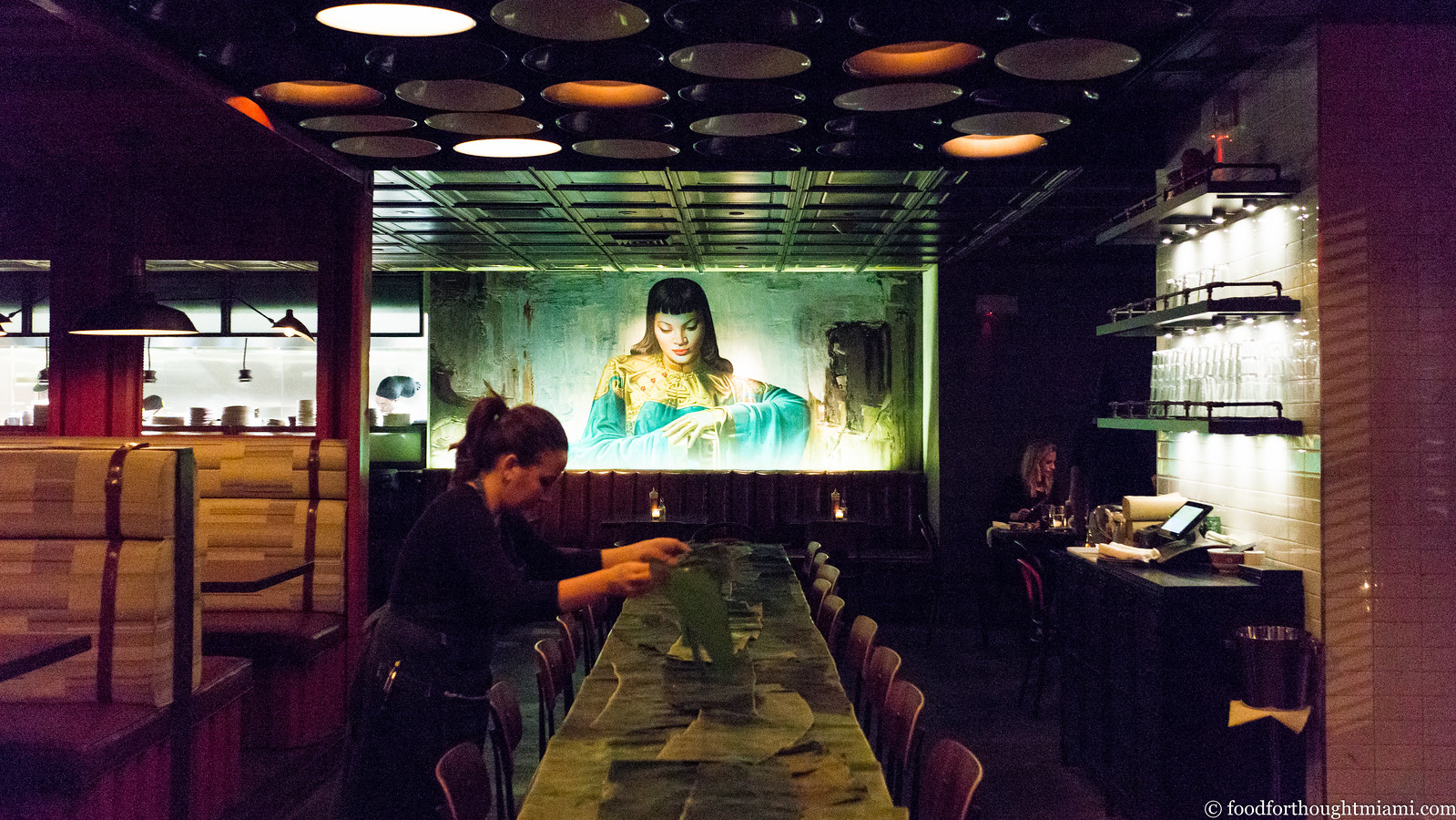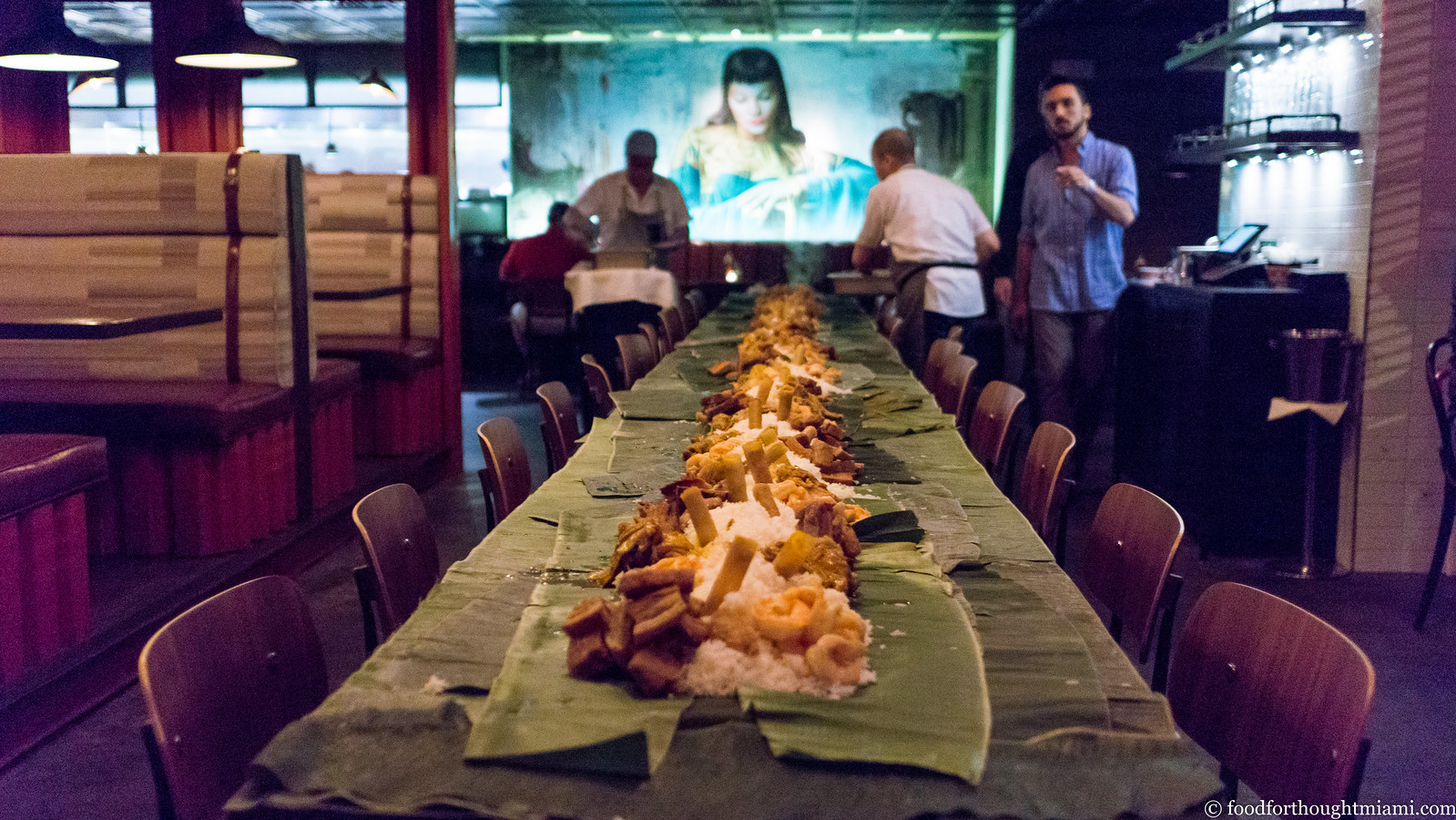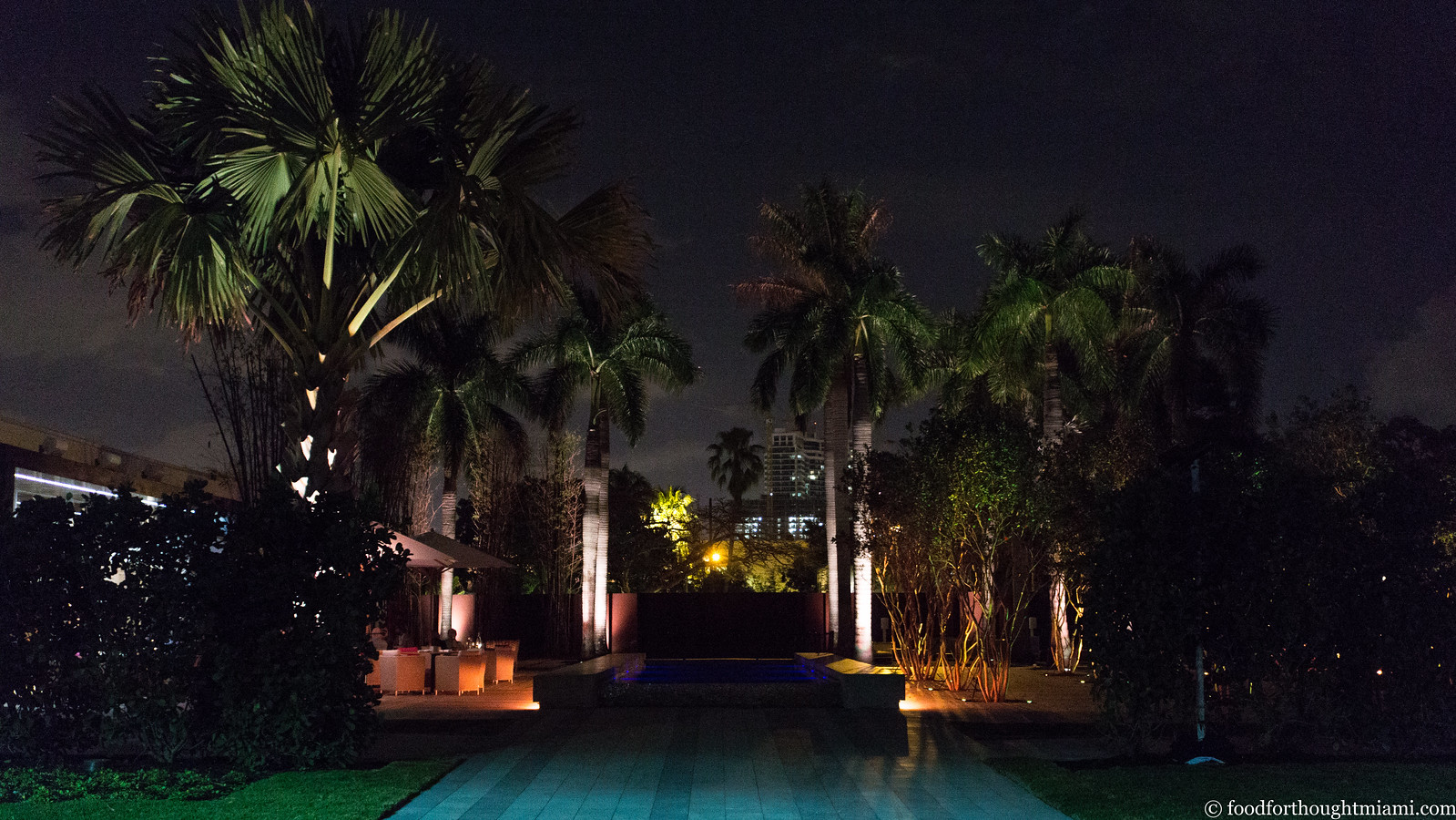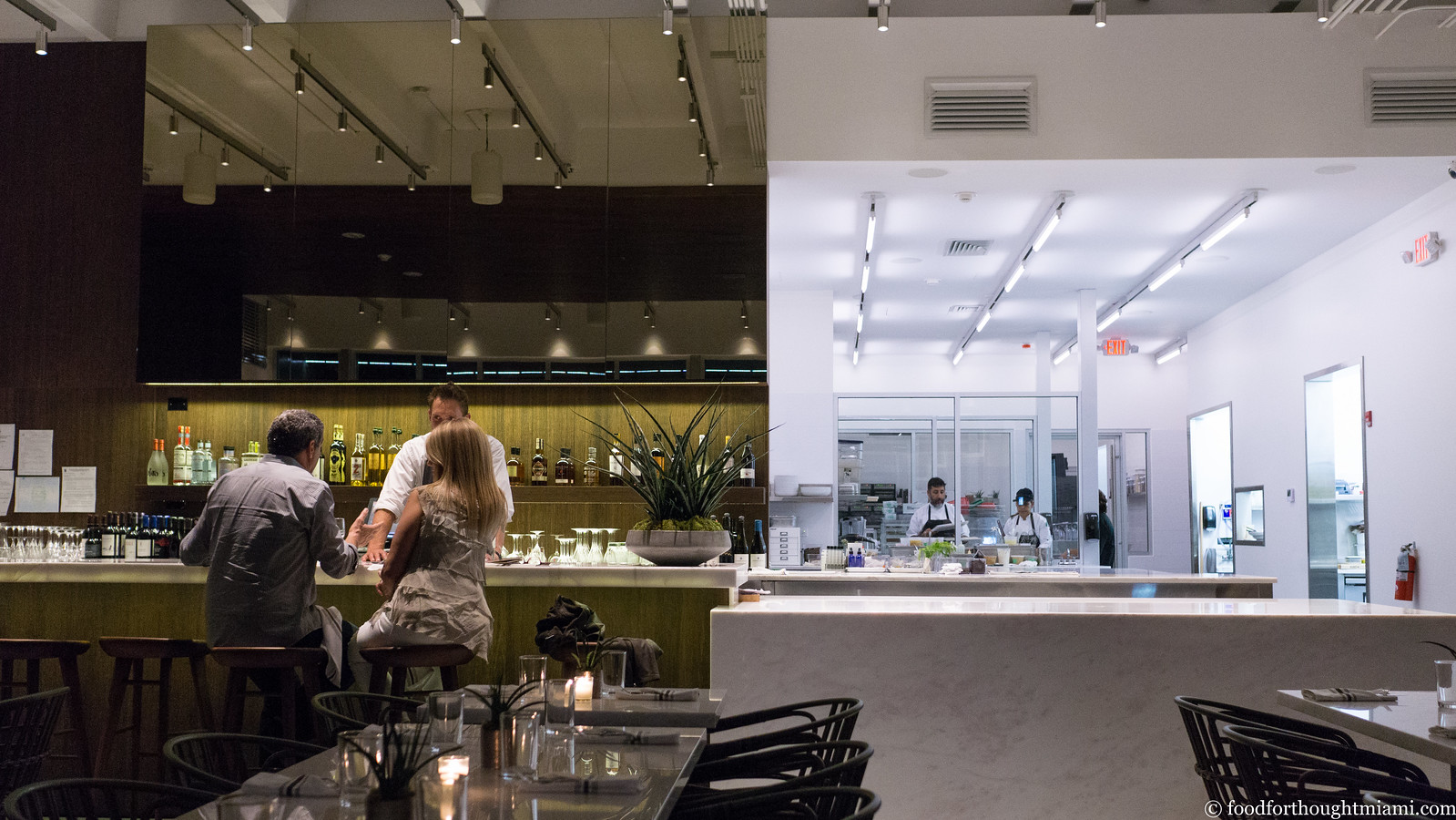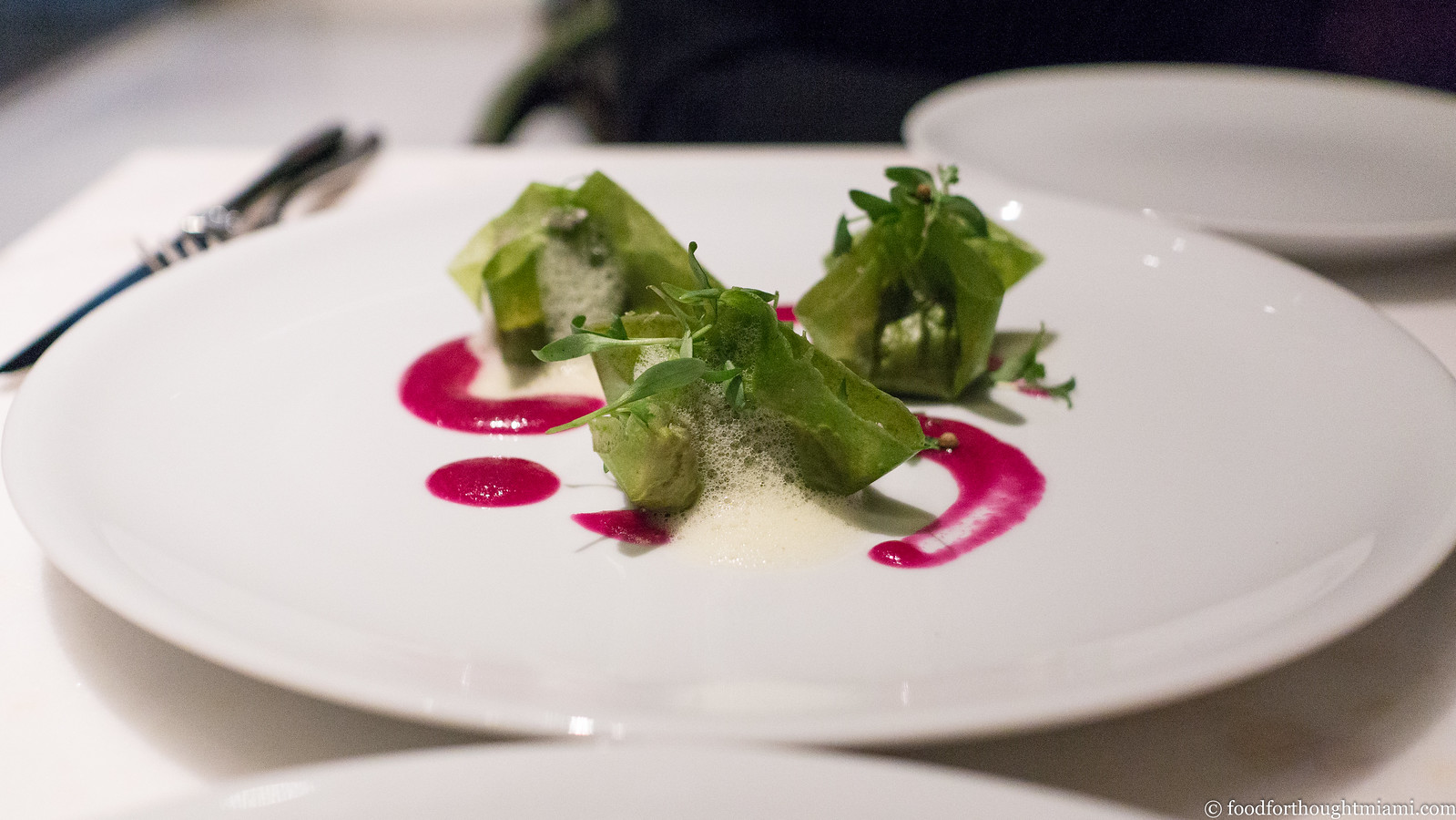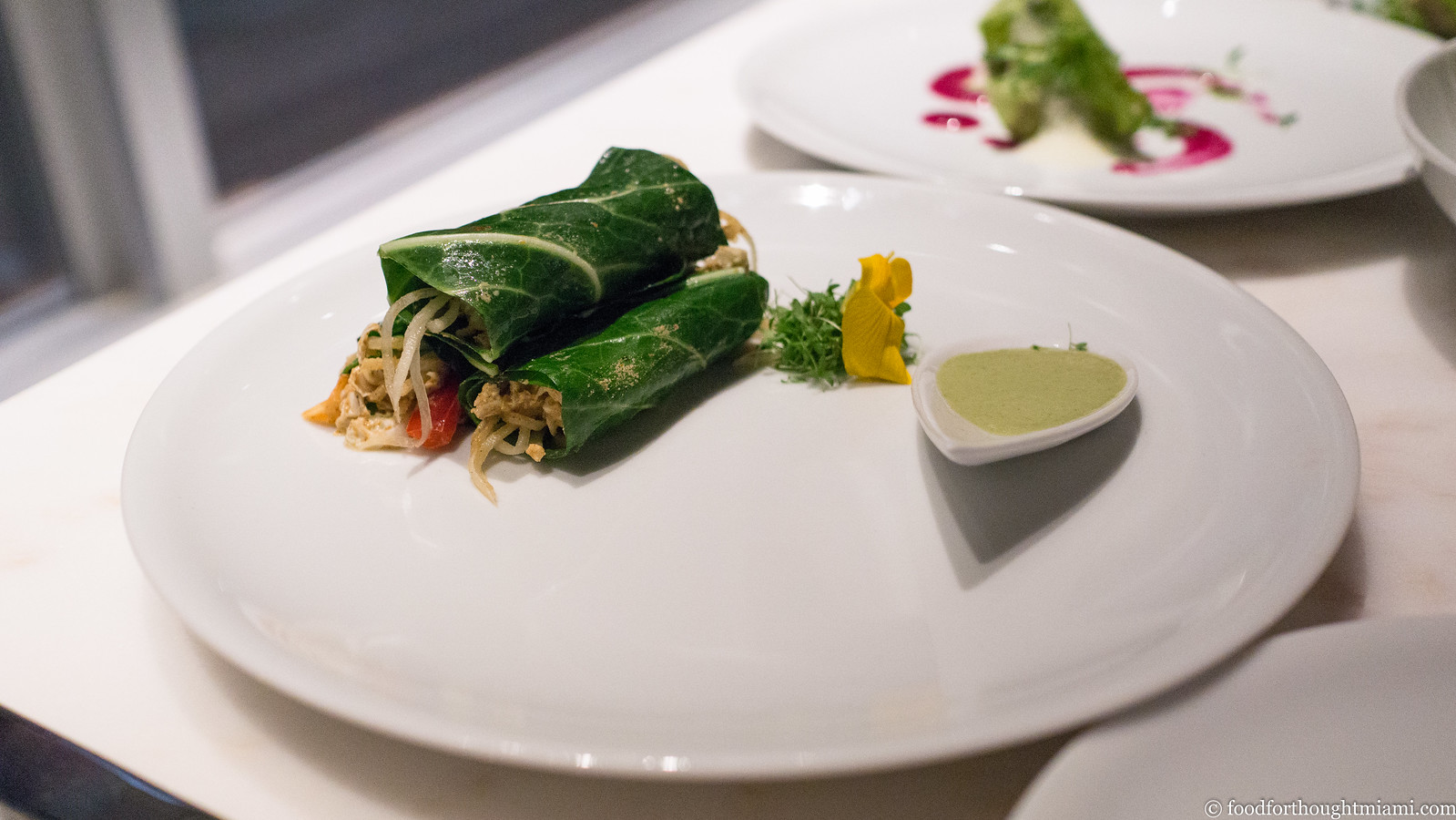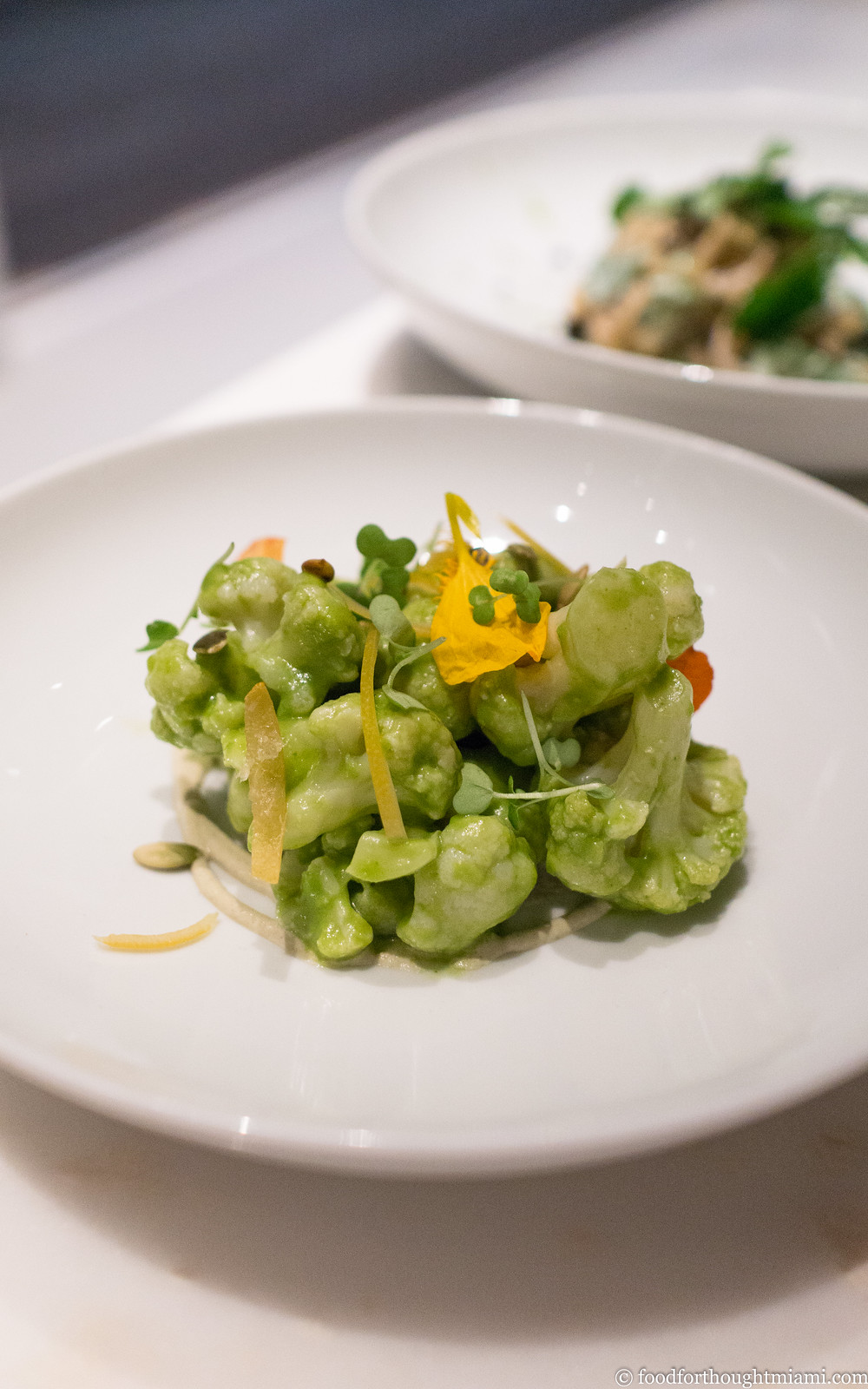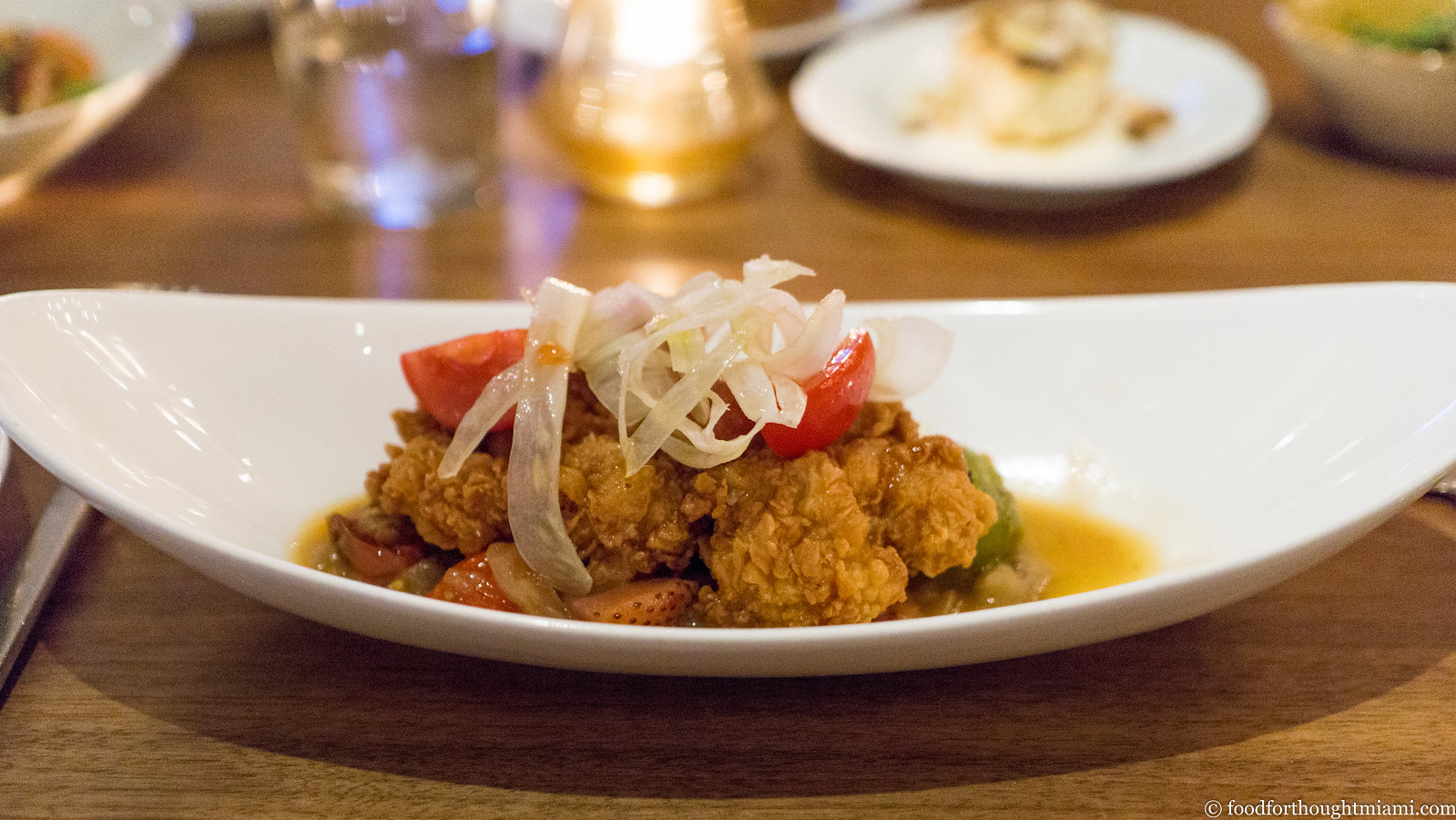Saturday, March 12, 2016
Cobaya Kamayan with Chef Dale Talde
We encourage chefs to think of a Cobaya dinner as a chance to do something different, something they typically couldn't otherwise pull of in their restaurants. Chef Dale Talde of Talde Miami Beach (and also of Talde Brooklyn, Talde Jersey City, Pork Slope and Thistle Hill) got the message.
(You can see all my pictures in this Cobaya Kamayan with Chef Talde flickr set).
We gathered in the restaurant's bar as our twenty-five guinea pigs made their way to Mid-Beach. Though Talde is inside the Thompson Hotel, it ditches the typical bland, anonymous feel of a hotel restaurant for a hodge-podge of Asian-Americana and hip-hop motifs: behind the hostess stand is a tongue-in-cheek portrait of Talde with a couple bikini-clad models all holding plates of food; one wall is covered with a street art style picture of a tangle of ramen noodles.
As we were assembling our guinea pigs, the Talde crew was getting ready for us, spreading out layers of banana leaves on one long communal table. Though Talde describes his style as "proudly inauthentic" Asian-American cooking, this was going to be a meal with a genuine connection to his Filipino ancestry: a kamayan feast.
What does that mean? From what I can gather from a few minutes of Googling, "kamayan" literally means "with your hands," and derives from a pre-colonial tradition in the Philippines of eating with one's hands. The Spaniards of course saw this as "uncivilized," and brought with them the use of cutlery. But great eating traditions don't die easily, and there is a real pleasure and sense of community in everyone literally digging into a meal with their hands. I've also seen the same thing described as a "boodle fight," referring to a Filipino military custom in the same style where soldiers and officers, regardless of rank, all eat with their hands from the same table.
So as we entered the dining room (after making sure everyone washed their hands), we found one long table covered in banana leaves, and then piled high with dinner for twenty-five. No plates, no utensils, just a lot of food – and a lot of napkins.
(continued ...)
Tuesday, March 8, 2016
first thoughts: Plant Food + Wine - Miami (Wynwood)
Skeptical. Doubtful. Dubious. Let's just say I wasn't really so sure that I'd enjoy a restaurant committed to an entirely vegan, raw menu. It's not that I'm opposed to vegetables – I love them. But as an unrepentant omnivore who cares about flavor first and foremost, I'm wary of any dogma that would keep huge categories of delicious edible things off my plate, and even more suspicious of the notion that none of the things on that plate should be cooked.
But that's the thinking behind Plant Food + Wine, Chef Matthew Kenney's new restaurant in Miami's Edgewater neighborhood.[1] Kenney is a chef and "lifestyle" guru who also runs The Gothic in Belfast, Maine as well as another Plant Food + Wine in Venice, California. He has published several books and hosts "Culinary Academies" to teach plant-based cooking techniques, all under the tagline of "crafting the future of food."
Pleasantly surprised. That's how I felt after my first meal at Plant. Despite an entirely vegan menu where no food is heated beyond 110° (and maybe even in some instances because of that commitment), the food at Plant was mostly quite delicious. Somewhat uncharacteristically for a restaurant that is in a sense defined by what it chooses not to serve, there's as much attention paid to flavor and presentation as there is to principle. And that's a welcome distinction.[2]
(You can see all my pictures in this Plant Food + Wine flickr set).
The place itself is a stunner. It's on a gigantic lot with a sprawling patio bisected by a blue-lit wading pool, surrounded by towering date palms. There's as much seating outside on the deck as there is inside the dining room, which feels open and breezy thanks to its double-height ceiling, bright white open kitchen,[3] and retracting glass doors that open the indoor and outdoor spaces up to each other.
The menu features several smaller items "for the table," followed by about eight "small plates" and around the same number of "mains," with most smaller plates priced in the low teens and larger plates hovering around the $20 mark. We ordered a couple of items from each section of the menu.
I've often puzzled over why so much plant-based food feels like penance. Vegetables can be so bright and colorful, yet so much vegan food – all the "field roasts" and "chik'n" and their ilk – looks like processed pet food. That's not the case at Plant, where vegetables are rightly celebrated.
Kimchi dumplings feature bright green translucent wrappers wrapped around a nutty filling, with even brighter beet-dyed magenta swooshes adorning the plate. I’ve gradually come around to Gael Greene’s conclusion that most foams are “insipid,” but here's one that actually tastes pointedly of ginger and contributes a nice accent to the dish. Banh mi lettuce wraps, another item "for the table," actually use deep-green collards for their casing, which are filled with a smoked chili-almond pate, crunchy napa cabbage, and slivers of pickled daikon radish and red peppers.
A sunflower caesar salad uses both crunchy romaine and peppery arugula, dressed in a thick sunflower seed dressing with a rich, tahini-like flavor.[4] Sunflower seeds play the role of croutons; briny capers even more effectively play the role of the traditional anchovies. It happens to be a great salad, mixing both bright and deep flavors and a bunch of nice textures.
A small plate of romanesco cauliflower, lightly cooked to soften its raw edge, is tossed with a tangy salsa verde, served over a rich toasted pepita cream, and laced with ribbons of preserved lime. More good flavors: but I wished it had been given another pinch of salt and that the preserved lime had more prominence.
The MK Bowl pictured at the top is listed in the “mains” – and I have to confess that while I have no opposition to salads generally, I often struggle to think of them as a main course to a meal. But this achieved a certain substantiality, combining delicate lettuces with heartier shaved root vegetables, creamy avocado, fresh sprouts, grassy carrot greens, and crunchy hemp seeds, all lightly bound with a tangy, savory lemongrass tahini dressing. I might have wished for the sunflower-chia seed “croutons” to have more crunch, instead of the texture of wet paper, but everything else here worked.
(continued ...)
Monday, March 7, 2016
best thing i ate last week: sweetbreads with tomato, fennel and pickled strawberry at Cena by Michy
The decor and menu have changed at Cena by Michy (f/k/a Michy's), but at least one thing remains the same: if there is a sweetbread dish on the menu at a Michelle Bernstein restaurant, it will be outstanding. Case in point: this sweetbread milanese, like a cloud encased in a crispy shell. It's served with a tangy sort of stew of cherry tomatoes and fennel ribbons, with a wonderful little surprise: pickled strawberries, which provide little jolts of refreshing, sweet-tart contrast.
I had been holding off on a visit to Cena because the online menu had not changed since my last visit and I was hoping for a little variety, but it turns out that's just because it's not updated in real-time. A couple other new items I really liked: croquetas of 'nduja and stracciatella, served with a romesco dipping sauce; and lurid magenta beet cavatelli with a pistachio and green almond crumble and Point Reyes blue cheese.
Subscribe to:
Posts (Atom)

